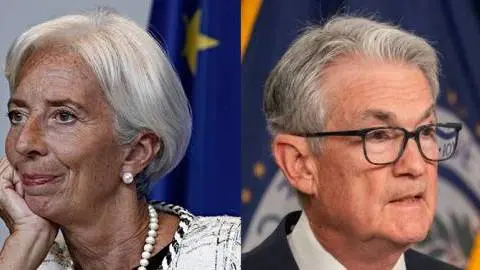NBH Preview: New year, same story
In our view, the interest rate complex will remain on hold at the first meeting of the National Bank of Hungary in the new year. Some early red flags on the macro side, combined with high financial market volatility, are set to keep the door shut on conventional easing in the coming months
The central bank kept its rates unchanged in December
As expected, the National Bank of Hungary kept its key interest rate unchanged at 6.50% in December. The interest rate corridor also remained unchanged, with a range of +/- 100 bp around the key rate. In line with its stability-orientated approach, this decision was again influenced by geopolitical tensions, risks to the inflation outlook and, most importantly, volatile financial market developments, i.e. the significant weakening of the Hungarian forint. Although the macroeconomic background would have supported some change, the decision was not unexpected by the market given the instability. We expect something similar in January.
The main interest rates (%)

Some early red flags on the macro horizon
Headline inflation accelerated in December, rising to 4.6% year-on-year (YoY). The acceleration was mainly driven by further increases in food, fuel, household energy prices and durable goods, due to the further significant depreciation of the forint. Although underlying inflation is also on the rise (core inflation rose to 4.7% YoY in December), this is not overly worrying data. Especially as the annualised three-month-on-three-month core inflation fell. The bigger problem is that the items whose prices rose the most are also the items that have the biggest impact on perceived inflation, and these also have a negative impact on household confidence.
In terms of risk perception from a monetary policy perspective, the December budget deficit was low compared to recent years, and thus the annual budget remained below the modified cash flow deficit target. However, the accrual-based deficit was higher than targeted, making it even more difficult to meet the 2025 fiscal plan. As for the external balances, we have not seen an alarming deterioration, but the strengthening import activity is clearly reducing the surpluses. In short, we are not talking about earth-shattering changes, but these factors call for caution.
Headline and underlying inflation measures (% YoY)

Financial market instability remains the real deal
The early red flags mentioned above alone should not scream out for a fully defensive stance. However, the ongoing instability and high volatility in the financial markets have once again closed any kind of debate before it had even started.
The EUR/HUF exchange rate remains the central bank's focus when it comes to financial stability. Since the December meeting, the exchange rate has been in the 410-415 range. Although there has been a downward trend since the peak in early January (416), the forint is still significantly weaker than its 100- and 200-day moving averages. Moreover, the past few weeks (the run-up to President Trump's inauguration and the first few days) have seen significant intraday volatility. In this environment, it is better to be safe than sorry if you need to manage a high-beta currency.
But this time it is more than just FX. Core rates have moved significantly higher over the past month, although this has mainly affected the long end of the US yield curve, which rose by around 20bp by 22 January. The short and long ends of the Bund yield curve have also moved up by around 20-30bp, with a steepening bias. As a result, the yield on 10-year Hungarian government bonds jumped by 45bp. The risk premium also increased, as the spread between 10-year HUF and PLN government bond yields widened by 40bp compared to the December meeting.
In such an environment, it is hardly surprising that the central bank's communication continued to focus on a cautious, patient and stability-orientated approach. Moreover, this has been complemented by a similar tone from the future central bank governor Mihaly Varga. The market's expectation is therefore crystal clear: no room for a rate cut at the start of the new year.
Performance of CEE FX versus EUR (end-2023 = 100%)

Our call
All things considered, we see no room for the central bank to ease monetary policy in the short term. In our view, the National Bank of Hungary will leave the interest rate complex unchanged at its next rate-setting meeting on 28 January. This will leave the key rate at 6.50%, which is a high conviction call. We also expect the Monetary Council to leave both ends of the interest rate corridor unchanged.
It is important to note that this is the penultimate meeting of the current Monetary Council. Governor Gyorgy Matolcsy's term ends in March, as does that of Council member Gyula Pleschinger. Vice-President Mihaly Patai's term also ends in April. Despite the expected personnel changes, we do not expect any rate cuts in the first quarter. However, the March meeting will be very interesting.
In the second quarter, the new Monetary Council could take action if the situation warrants it, but this is far from a high conviction call. Nevertheless, based on our forecasts for the European Central Bank's and the regional central banks' rate paths, we believe that a total of 75bp of rate cuts could be implemented this year in Hungary, starting in June at the earliest, which would be in line with the average size of easing cycles in the region.
Our market views
EUR/HUF remains in the market spotlight and seems to be the main driver of monetary policy and HUF assets. Realised FX volatility has declined significantly since December but still remains well above CEE peers. In particular, positioning rebalancing in global markets after President Trump's inauguration has brought visible relief for the forint, allowing a return to 410 EUR/HUF in recent days, which we believe is consistent with the levels indicated by the rate differential in our models (410-412).
A pause in global pressure in the EM space and a cautious tone from the NBH should provide some reassurance in EUR/HUF. However, medium term we expect EUR/USD to move lower again and the market's dovish bias in HUF rates will combine to push EUR/HUF higher again. Thus, we maintain our end-1Q forecast at 420. The wild card on the positive side here may be some progress in the Ukraine-Russia conflict and any peace deal discussions should support CEE FX, which could benefit the HUF significantly through the channel of lower commodity prices and the general openness of the Hungarian economy.
Hungarian yield curve

With the lower EUR/HUF, risk-on sentiment towards fixed-income assets has returned to the market. The rates market is currently pricing in roughly two 25bp NBH rate cuts within a year and pricing is quickly returning to rate hikes in the longer-term horizon. Looking further out the curve remains very flat. While we cannot expect any dovish surprises from the NBH in the near term given FX volatility and higher inflation in December, we still believe the IRS curve offers good value within CEE peers. Moreover, the calmer FX market in recent days will, in our view, attract receivers back into the belly curve in particular, with the 5y IRS around 6.50%, matching the policy rate.
HGBs, which have seen significant foreign outflows in recent months, seem equally attractive. In January in particular, we saw a significant widening of spreads vs most CEE peers, resulting in more attractive valuations. This year we should see a noticeable increase in HGB issuance given the debt agency's greater focus on local funding, but against that, we should see demand coming from high redemptions of HGBs, T-bills and the retail bond market which should cover most needs.
This publication has been prepared by ING solely for information purposes irrespective of a particular user's means, financial situation or investment objectives. The information does not constitute investment recommendation, and nor is it investment, legal or tax advice or an offer or solicitation to purchase or sell any financial instrument. Read more
Download
Download article
23 January 2025
Our analysts’ views on this week’s central bank meetings This bundle contains 6 Articles




